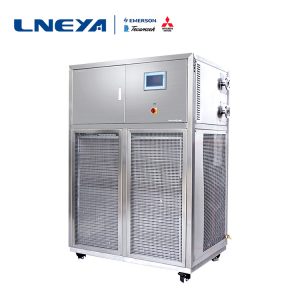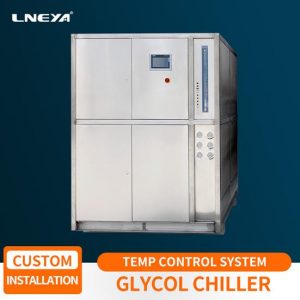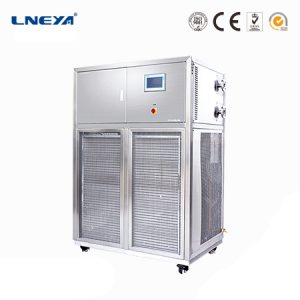Introduction to heating cooling temperature control system of fermentation tank

In the pharmaceutical and biochemical industry, the fermentation tank needs to be equipped with a heating, cooling and temperature control system to control the temperature in the system. The LNEYA refrigeration, heating, cooling and temperature control system realizes the internal temperature control through the external connection of the fermentation tank.
Because the temperature of the fermentation tank has a great impact on the fermentation process, in addition to the direct relationship, humidity also affects the physical and chemical properties of the reaction solution, such as the viscosity of the reaction solution, the solubility and transfer rate of the substrate and oxygen in the reaction solution, the decomposition and absorption rate of some substrates, the kinetic properties of fermentation and the biosynthesis of products.
The fermentation temperature of the fermentation tank is not only applicable to the growth of bacteria, but also to the synthesis of metabolites. It changes with the type of microorganism, composition of culture medium, conditions and growth period. During the whole fermentation process, not only a culture temperature should be selected, but also different culture temperatures should be selected according to different stages of fermentation.
In actual production, because of the large volume of fermentation liquor and the temperature that is difficult to be raised, the more appropriate temperature of culture is often selected during the whole fermentation process to make the yield better, or adjust it appropriately under possible conditions. The growth stage should choose a more suitable growth temperature, and the product secretion stage should choose a more suitable production temperature.
The fermentation temperature needs to be controlled, and then it needs to be measured first. The fermentation temperature can be detected by thermometer or automatic recording equipment, and adjusted by using cold water, hot water or heat transfer oil into the fermentation tank jacket or coil.
In industrial production, generally used large fermentation tanks do not need to be heated during the fermentation process, because the fermentation releases a large amount of fermentation heat. In this case, cooling is usually required. Use automatic control or manual control valve to heat the low-temperature medium of the refrigeration circulator to connect the jacket or coil, and cool and maintain constant temperature fermentation through the heat exchange principle.
Recomendações relacionadas
-
Como lidar com o mau funcionamento do sistema de arrefecimento de água industrial?
1809O que há de errado com o sistema industrial de resfriamento de água quando ele não consegue esfriar? Deixe LNEYA explicar para você abaixo: Uma razão é que o uso inicial do sistema de resfriamento de líquido não consegue reduzir a temperatura, ou há algo errado com ...
Ver detalhes -
Como escolher um evaporador de teste de bateria eléctrica?
1971A corrosão dos metais ferrosos pela água salgada é muito forte, e a sua corrosão é mais grave quando entra em contacto com o ar. Por conseguinte, na medida em que o processo de produção o permita, devem ser utilizados, tanto quanto possível, circuitos fechados. Para os voláteis ...
Ver detalhes -
A solução do refrigerador de etilenoglicol está demasiado fria e demasiado quente
1691Quando a solução do refrigerador de etilenoglicol é sobreaquecida e sobrearrefecida durante o funcionamento, se não compreender bem estas condições, não será capaz de operar bem o equipamento.
Ver detalhes -
Como escolher o preço do sistema de temperatura constante de semicondutores?
1682Agora, pode-se dizer que a maioria da produção industrial de vários tipos requer um sistema de termóstato semicondutor para fornecer refrigeração profissional, e um sistema eficiente de temperatura constante de semicondutores pode fornecer grande ajuda para várias...
Ver detalhes
 LNEYA Refrigeradores industriais Fabricante Fornecedor
LNEYA Refrigeradores industriais Fabricante Fornecedor














